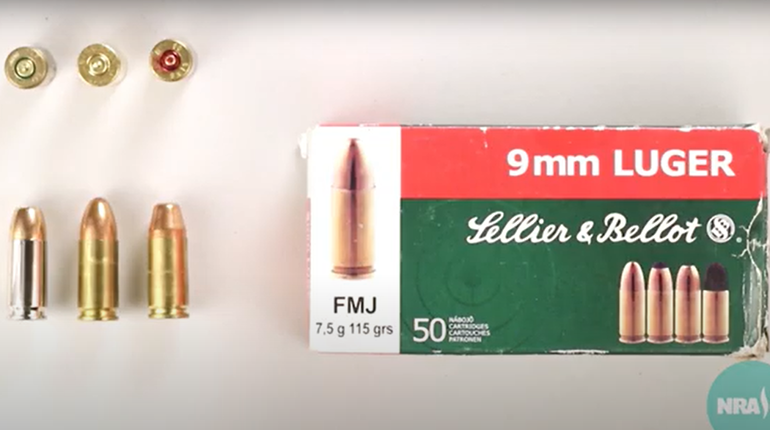
If you’re new to shooting, there is probably nothing more reassuring than a good old blanket statement when you ask a question. Some of the things you’ll learn can be confusing at first, and having to learn an entirely new set of information can be difficult. Whittling it down to a few simple concepts always makes things easier, so why not? Well, the truth is, few topics are cut-and-dried in the world of firearms. Many questions require a thorough explanation to help the asker make the right decision. The problem is, not many folks are qualified to have that discussion, so they resort to snappy answers that don’t truly address the question. Here are five blanket statement answers that always make me roll my eyes.
1. Rifles have more recoil than handguns.
I get in trouble at gun stores quite a bit. I love to browse new shops, as it helps me to keep a pulse on the market and engage with prospective gun owners to get an idea of what the current trends are, as well as what new gun owners are going through. Invariably, I’ll hear someone ask the guy behind the counter which platform has more recoil, and if their response only has one word in it, I chime in … and sometimes get asked to leave. Most tend to say that rifles have more recoil, while some say pistols do.
The answer is (and almost always is) “It depends.” Instead of the platform, it’s better to turn your attention to the chamberings. A massive rifle chambered in .22LR will have the recoil of a BB gun, whereas a tiny revolver chambered in .357 Magnum can have enough kick to cause pain to the shooter. Let what it fires drive your decision, and don’t be afraid of a little extra mass on the gun, as that soaks up recoil through basic physics. (Trust the science!)
2. X brand ammo is more accurate than Y brand.
Just like almost every other product on the market, ammo comes in quality tiers. The only way to compare any two brands is to be familiar with those tiers, and compare apples to apples. If you take one company's match-grade load and put it up against another’s practice load, the takeaway shouldn’t be that the first company makes a better overall product.
Furthermore, accuracy is a relationship between a firearm and the ammunition inside. The only way to tell what will group best in a given gun is to try multiple brands and styles of ammo. I’ve had guns do better with Federal’s low-price American Eagle load than its Gold Medal Match load. Knowing that, it’s foolish to believe you can make any statement at all regarding accuracy other than “X is good in this firearm because I’ve shot it; I don’t know about Y.”
3. Buy an X-branded firearm; Y makes junk.
I don’t care what company or in what industry; I can guarantee that in its history, it’s made a few missteps. Those missteps are enough to scar some customers for life. However, even through that given manufacturer’s “dark” times, I bet they managed to hold together at least one stellar fail-safe product. Gun makers are no different, and you cannot hold an entire brand accountable for one period of time or a few flops.
Times change, management changes and processes change. Add it up, and it points back to more research. If you have something in mind, read all the reviews you can find on it, search that model plus the word “recall,” and ask around to see if somebody you know has one and uses it regularly.
4. Rifle shooting is easier than pistol shooting (or vice versa).
I instruct both platforms, and again, it depends. Maybe not so much on the firearms, but more on the shooter, their eyesight and target distance. If a student is okay with math and they are more comfortable perched at a shooting bench or lying on the ground, odds are they are going to do better with a rifle than a pistol. If a student is more athletic and enjoys moving and solving problems on their feet, then pistol shooting is likely more up their alley. At the end of the day, if you’re interested in shooting, try as many different disciplines and firearms as you can before you decide which will come most naturally.
5. X cartridge has more “stopping power” than Y cartridge.
I’ll save my disdain for the phrase “stopping power” for another piece, so let’s just focus on the comparison part of that statement. Throwing the half-baked pseudo measurement aside, let’s replace it with something more quantitative: muzzle energy.
This number comes from a formula involving the projectile weight and how fast it’s moving. As a fast-moving, lightweight bullet can have more energy than a big, slow one, saying things like “.45 ACP is more powerful than 9mm Luger” isn’t always true. I’ve had plenty of test cases where the opposite was the case, especially if the larger one is fired from a shorter barrel. The answer lies within a chronograph, as it can measure the speed of the bullet leaving your gun. Then, a simple online converter can do the math for you; just plug in the numbers.
All that said, there is one blanket statement upon which you can bet your life: ALWAYS Keep The Gun Pointed In A Safe Direction; ALWAYS Keep Your Finger Off The Trigger Until Ready To Shoot; and ALWAYS Keep The Gun Unloaded Until Ready To Use.







































